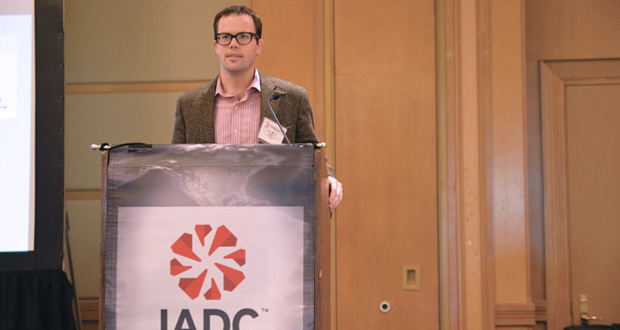Shell: Sharing software solutions would move industry closer to rig automation

By Joanne Liou, Associate Editor

When asked what will accelerate the adoption of modern technologies commonly used in other industries, 53% of approximately 150 people polled at the 2014 IADC Advanced Rig Technology Conference answered, “A better understanding of the business case and value.” That same thinking applies to the application of open software solutions for rig automation. Companies must believe a business case exists in order for them to invest resources into innovation, Eric Nelson, Autonomous Systems Technical Lead at Shell TechWorks, said at the conference on 16 September in Galveston, Texas.
Mr Nelson noted that computational power, software technology and communication have improved significantly over the past 10-20 years. However, the drilling industry continues to be challenged by the complexity of its systems; the time it takes to integrate new actuators, sensors and algorithms; and costs. As a result, the move toward a fully automated rig remains slow. “Someone has a new idea for an algorithm, but the actual cost of entry into the field is very high. There’s a lot of software infrastructure needed, and to that end, there is a lot of duplicated effort,” Mr Nelson explained. “Everyone going for rig automation is duplicating that effort, putting the infrastructure in place.”
To improve the process and time it takes to realize an automated rig, Mr Nelson suggested that the industry move toward open architectures and open software. “It’s hard to get people to unanimously agree on interface standards,” he said. Therefore, the focus should be pivoted toward architecture standards and interoperability. “Choosing a common architecture enables products from different vendors to come together more fluidly. We want plug-and-play ability to add new actuators, sensors and algorithms cheaply without having to reinvent the wheel.”
Further, companies should agree on core software to make available to avoid duplication across industry and academia. Pointing to the software industry, where open solutions are widely used, Mr Nelson highlighted the success of the “free” Linux operating system. “It competes with Microsoft Windows and Apple’s Mac OSx. There’s a common misconception that Linux is developed entirely by volunteers, but it’s actually major companies like IBM and Hewlett Packard that contribute to push Linux forward,” he explained. IBM had developed a proprietary operating system, in which it was investing approximately $900 million a year. “Now they are contributing $100 million toward the Linux project annually and sharing the burden with several others. They changed their business model to work with this, but they are able to save a lot of money.”
“Free” software does cost money, but the value is that companies will be able to use, modify and enhance it to help push innovations forward. “My challenge to the community is to embrace the benefits of sharing select IP (intellectual property). There’s a lot to be gained, and we don’t want to reinvent the wheel, specifically in software.”




